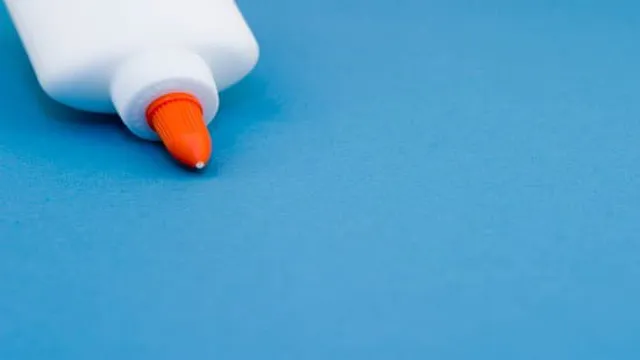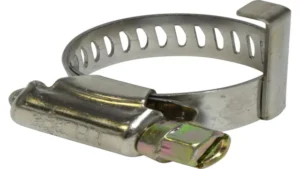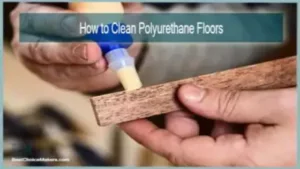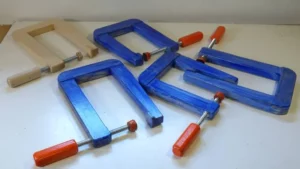Woodworking enthusiasts know how crucial it is to use a good quality wood glue. It not only makes the finished product look seamless but also adds durability. However, the wait time after applying glue and clamping the pieces together can be a test of patience.
So, how long should wood glue dry before removing clamps? This question has been asked time and time again by both beginners and experts, and the answer is not as simple as one might think. In this blog, we will explore the drying time of different types of wood glue and provide you with tips to ensure a successful bonding process. So, grab a cup of coffee and let’s dive in!
Introduction
When it comes to woodworking, using a good quality wood glue is crucial for achieving a strong and durable bond between wood pieces. However, one of the most frequently asked questions by beginners is how long they should wait before removing clamps after gluing the pieces together. Generally, most wood glues require at least 24 hours to dry completely, but it ultimately depends on a variety of factors.
For instance, the type of wood, humidity, temperature, and amount of glue applied can all impact the drying time. To ensure the best possible result, it’s crucial to read the instructions on the glue bottle and allow sufficient drying time before removing clamps. Rushing the process could result in a weak bond that can jeopardize the structural integrity of your project.
Be patient and give the glue the time it needs to dry completely, and you’ll be rewarded with a beautiful, long-lasting result.
Overview of Wood Glue and Clamping
Wood glue and clamping are essential tools when it comes to woodworking projects. Wood glue is a type of adhesive that is specifically formulated for use with wood. It allows you to bond pieces of wood together, fill gaps or cracks, and create a strong, permanent hold.
Clamping is the process of applying pressure to the glued pieces to ensure a tight, secure fit. While glue is necessary, the clamping process is equally critical as it allows the glue to cure properly and strengthen the bond. With proper use of wood glue and clamping, you can execute a vast range of woodworking projects with ease.
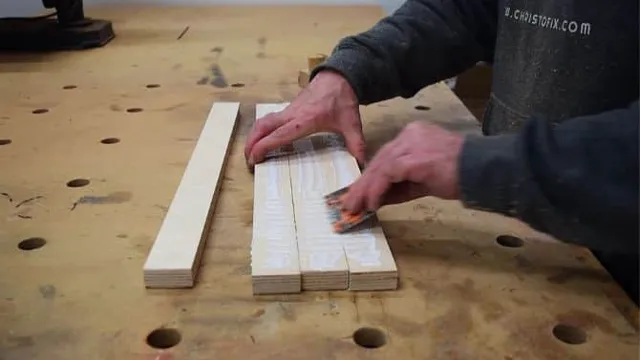
Importance of Properly Dried Glue
Properly Dried Glue When it comes to arts and crafts or any DIY projects, it’s important to use glue that is properly dried. Failure to do so can result in a weak bond that won’t hold up over time. Not only that, but improperly dried glue can be unsightly and ruin the appearance of your project.
The key to ensuring that your glue is properly dried is to give it enough time to set. Rushing the process can result in a brittle bond that will eventually break apart. The process of drying glue varies depending on the type of glue being used, but it’s important to follow the manufacturer’s recommendations for drying times.
Taking the time to properly dry your glue will ensure that your finished product is strong and looks great.
Factors Affecting Drying Time
After applying wood glue to a project, the question of how long to wait before removing clamps is important to consider. The answer to this question depends on various factors affecting the drying time of the glue. Some factors influencing the drying time include the type of glue used, environmental conditions, the humidity levels, the amount of glue applied, and the type of wood used.
Not surprisingly, the amount of glue applied affects drying time, as thicker glue layers require more time to dry. Humidity is also a significant factor that affects glue drying times, as higher humidity levels can cause the glue to dry slowly. It is essential to note the temperature and airflow in the area, with warmer temperatures and increased air circulation being favorable for quicker drying times.
Ultimately, it is best to wait at least 24 hours before removing clamps to ensure the glue has dried completely, especially when dealing with larger amounts of glue or pieces of wood.
Type of Wood Glue Used
When it comes to wood glue, there are several factors that can affect the drying time. One of the most important factors is the type of glue used. Different types of wood glue have different drying times, with some drying faster than others.
For example, PVA glue is a popular choice for woodworking because it dries quickly, usually in about 30 minutes to an hour. However, epoxy glue takes longer to dry, and can take up to 24 hours to fully set. Other factors that can affect drying time include temperature and humidity, with higher temperatures and lower humidity levels generally resulting in faster drying times.
Additionally, the type of wood being glued can also affect drying time, with denser woods taking longer to dry than softer woods. Ultimately, it’s important to choose the right type of glue for your project and to take into account all the factors that can affect drying time to ensure a strong, long-lasting bond.
Humidity and Temperature
When it comes to drying time, two factors that have a significant impact are humidity and temperature. Higher humidity levels can slow down the evaporation process, making it take longer for materials to dry. This is because the air already contains a lot of moisture, so it’s harder for wet surfaces to release their own moisture.
On the other hand, lower humidity levels can speed up the drying time as there is less moisture in the air and more opportunity for evaporation. Temperature also plays a role as higher temperatures generally mean faster evaporation. Hot air can carry more moisture than cool air, so higher temperatures can help to speed up the drying process.
However, it’s important to note that extremely high temperatures can also cause materials to dry too quickly and become brittle or damaged. Therefore, finding the right balance between humidity and temperature is key in achieving an optimal drying time for various materials and surfaces.
Type of Wood and Surface Area
When it comes to drying wood, the type of wood and surface area are two major factors that can affect the drying time. Different types of wood have different densities, which means that some woods will dry faster than others. For example, softwoods such as cedar and pine will typically dry quicker than hardwoods like oak and maple.
Additionally, the surface area of the wood can also impact the drying time. Smaller pieces of wood will usually dry faster than larger ones, as they have less surface area to lose moisture from. Moreover, the thickness of the wood also plays a role in the drying time.
Thinner pieces of wood will dry more quickly than thicker pieces, as the moisture has less distance to travel in order to escape. Ultimately, the type of wood and surface area are key considerations when it comes to drying time, and it’s important to take these factors into account when planning woodworking projects.
Determining Drying Time
If you’re wondering how long wood glue should dry before removing clamps, the answer will depend on several factors. First and foremost, it’s important to note that different types of wood glue have different drying times. For instance, PVA glue typically takes around 30 minutes to an hour to dry, while polyurethane glue can take several hours.
Another factor to consider is the humidity and temperature of your workspace. If it’s extremely dry or hot, the glue may dry faster, but if it’s too humid or cold, it may take longer. The type and thickness of the wood you’re gluing also affect how long the glue will take to dry.
Thicker pieces of wood will take longer to dry, and if one surface is more porous than the other, the glue may be absorbed more quickly on certain areas. So, how do you know when to remove the clamps? It’s best to wait at least an hour before removing them, and if you’re unsure, wait a bit longer to be safe. Keep in mind that even if the surface of the glue appears dry, the inside layers may still be wet, so it’s important to give it enough time to dry completely before removing the clamps.
Overall, patience is key when it comes to gluing wood. Rushing the drying process can lead to weak or failed bonds, so it’s always better to err on the side of caution and give the glue ample time to dry.
Manufacturer Instructions and Testing
When it comes to determining the drying time of a product, it’s important to follow the manufacturer instructions and testing procedures. These guidelines have been specifically tailored to the product and will ensure that it is dried properly and efficiently. It’s also important to keep in mind that drying time can vary based on a variety of factors, such as humidity levels, air flow, and temperature.
As such, it’s important to monitor the drying process carefully and adjust as needed. Think of it like baking a cake – you need to follow the recipe and keep an eye on it in the oven to make sure it comes out just right. By following manufacturer instructions and being vigilant during the drying process, you can ensure a quality finished product that is properly dried and ready for use.
Visual Cues and Tactile Testing
One of the crucial parts of any coating or paint job is determining the drying time. Visual cues and tactile testing are the two primary methods used to identify if the coating or paint has dried fully. Visual cues refer to the change in appearance of the coating or paint from wet-to-dry.
This can include changes in hue, glossiness, and texture. On the other hand, tactile testing involves physically feeling the surface of the coating or paint to determine if it has dried. A common method is to press a finger or thumb onto the surface and evaluate if it leaves a mark or impression.
When conducting tactile testing on coating or paint, it is essential to avoid using too much pressure as it can cause dents or marring. Additionally, ensure you use proper safety equipment during the testing process, especially when dealing with toxic or hazardous chemicals. By utilizing both visual cues and tactile testing, you can accurately determine the dryness of coating or paint and proceed with finishing the project.
Conclusion
In short, the answer to the age-old question of how long wood glue should dry before removing clamps is simply: it depends. It may take several hours, or even days, depending on the type of glue, the wood species, and the environmental conditions. However, we can all agree that patience is key when it comes to woodworking, so take your time, sip on a cup of coffee, and let the glue work its magic before removing those clamps.
Remember, good things come to those who wait, and in this case, a strong and sturdy joint is definitely worth the wait!”
Importance of Patience and Proper Drying Time
When it comes to painting, one of the most essential factors is time. Specifically, one needs to properly determine the drying time of their paint. Rushing through it simply because you are eager to see the finished product can lead to unsatisfactory results.
Patience is required, and this cannot be overstated. A drying time that is too short can cause smudges, blurs, and overall, an uneven result – definitely not the look you want! So how do you determine the right drying time? The type of paint you’re working with is a significant factor. Oil-based paint, for instance, takes longer to dry compared to a water-based one.
Additionally, humidity, temperature, and the thickness of the paint can all influence the drying time. So it’s important to factor in all these variables to get the ideal result. Take your time and resist the urge to rush through it, and you’ll enjoy an impressive finish that will last for a long time.
FAQs
How long should wood glue dry before removing clamps?
It depends on the type of wood glue being used, but typically it should dry for at least an hour or two before removing the clamps. However, it’s best to refer to the manufacturer’s instructions for specific drying times.
Can I use a hairdryer to speed up the drying time of wood glue?
No, it’s not recommended to use a hairdryer to speed up the drying time of wood glue. This can cause the glue to dry too quickly, leading to a weaker bond.
Can I leave clamps on for too long when using wood glue?
Yes, leaving clamps on for too long can cause the glue to fully cure with the wood piece in a compressed state, leading to a weaker bond. It’s recommended to remove the clamps once the glue has dried enough to hold the pieces together.
Can I sand wood glue after it has dried?
Yes, wood glue can be sanded after it has dried. However, excessive sanding can weaken the bond and should be done with caution.
Will wood glue work on all types of wood?
Wood glue is designed to work on most types of wood, but it’s important to use the correct type of glue for the specific type of wood being used.
Can I use wood glue for outdoor projects?
Yes, there are special types of wood glue designed for outdoor use that can withstand water and weather exposure.
Can I stain over wood glue?
Yes, wood glue can be stained over once it has dried. However, the glue may not take the stain in the same way as the wood and could affect the appearance. It’s recommended to test a small area first.
